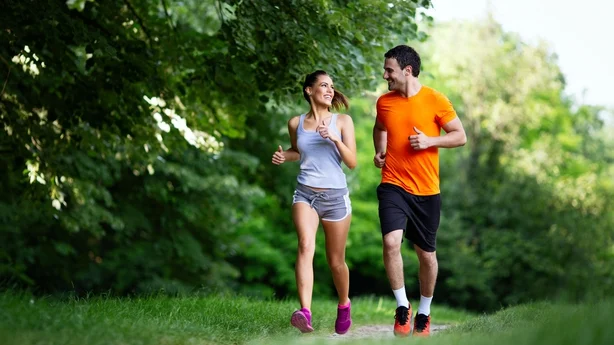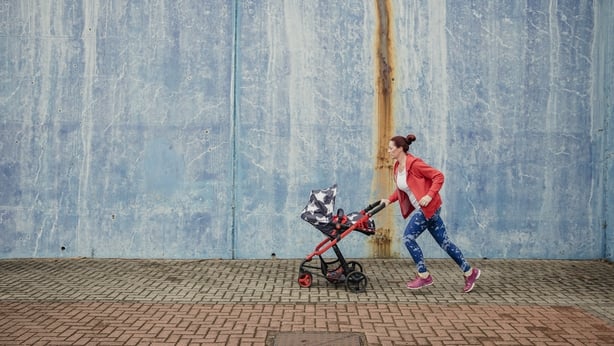Keeping to the right pace is one of the most important running skills to master. Yet many beginners head out of their front door and start pounding the pavements at peak speed, hoping a quick start will get them to the finish line earlier.
But, no matter what stage of the running journey you’re on, pacing is crucial, because it help you to efficiently use the energy in your body and avoid running out of steam when you’re still miles from the final stretch.
But how can you find out your running pace, and what can you do to improve it? We asked the experts to explain…
Why is pacing so important?

"Pacing is a vital skill for runners, as it helping to improve consistency and speed, which is important if you’re training for an event, or simply trying to progress, get fitter and beat your personal best," says David Wiener, training specialist at AI-based fitness and lifestyle coaching app Freeletics.
"The reason why setting a pace is important is because it ensures you’re running at a speed where you can comfortably accumulate mileage," says Tiago Ribeiro, co-founder of Common Purpose.
"It’s the base foundation of your running and once you’ve nailed that, you can start thinking about interval training and tempo." If your goals are endurance-based, Ribeiro says that 80 percent of your running should be at your pace time.
It can also help you to avoid getting injured. "You can’t go full pelt on every run, because you run the risk of picking up knocks and injuries that might set your progress back," says Kieran Smith, founder of The Kilometre Club.
"You don’t have to be a seasoned runner to find pacing strategies useful," continues Wiener. "Those who run smaller distances – like 5k – can benefit too, helping to improve their performance, distance and speed."
How can you work out your training pace?

Your training pace will largely be dependent on what you are trying to achieve, and Wiener says it will differ if you’re really pushing yourself to improve endurance or speed, or running for fun and general fitness.
"If you’re new to pacing, you need to establish your base training pace, which essentially means a pace that you can maintain and hold a conversation. Known as the ‘talk test’, this method will allow you to find a pace where you are not breathless, helping to develop your aerobic threshold," he explains.
Another way to work out your training pace is by finding a running track or a flat road and then running one mile or 1km hard – not your max effort, but close to it, and seeing what your time is. "Known as the ‘track test’, this will help you determine what pace is good for your fitness level, and from there, you can try to increase your speed every few weeks," he adds.
"Keeping track of your times and distances will help you to assess if you’re improving, and give you a solid understanding of your capabilities and where you can look to improve."
Once you find your base pace, either with the talk or track test, you can use that to calculate what you can expect when you increase your mileage.
Wiener says there are also some free, comprehensive pace calculators online, where you can input your running distance and time to obtain optimal training paces, which can help you towards your running goals. Strava has a helpful tool that can help you calculate your finish time for popular race distances like 5k, 10k and half marathons.
Top tips for improving your running pace over time

"One of the best ways to improve your running pace is by getting to grips with and nailing your form," says Wiener. "Keeping your upper body tall yet relaxed and swinging your arms forward and back, not side to side, at a low 90-degree angle will help to propel you forward and improve your speed."
Regular hill sessions can also help with pacing. "A lot of runners swear by hill training, which increases your incline and the challenge on your calves. If you can run fast up a hill, it makes it easier to run on flat ground," says Smith.
So too, can strength training. "If you are stronger, every running stride is easier than it would be if you were weaker. You will also consume less oxygen, which improves your running technique," says Wiener.
Interval work can also be beneficial, so Weiner advises practising sprints, Hiit and tempo training, to increase your fitness levels and – as a result – your pace.
Finally, recovery is also vitally important, which comes from a good diet, proper stretching and sufficient sleep, says Wiener. "Aim to eat a quality meal or snack of carbohydrates and protein within 30 minutes after finishing your run. This is the optimal window of recovery, where your body can best absorb the nutrients to refuel and recover with."
Disclaimer: The copyright of this article belongs to the original author. Reposting this article is solely for the purpose of information dissemination and does not constitute any investment advice. If there is any infringement, please contact us immediately. We will make corrections or deletions as necessary. Thank you.






